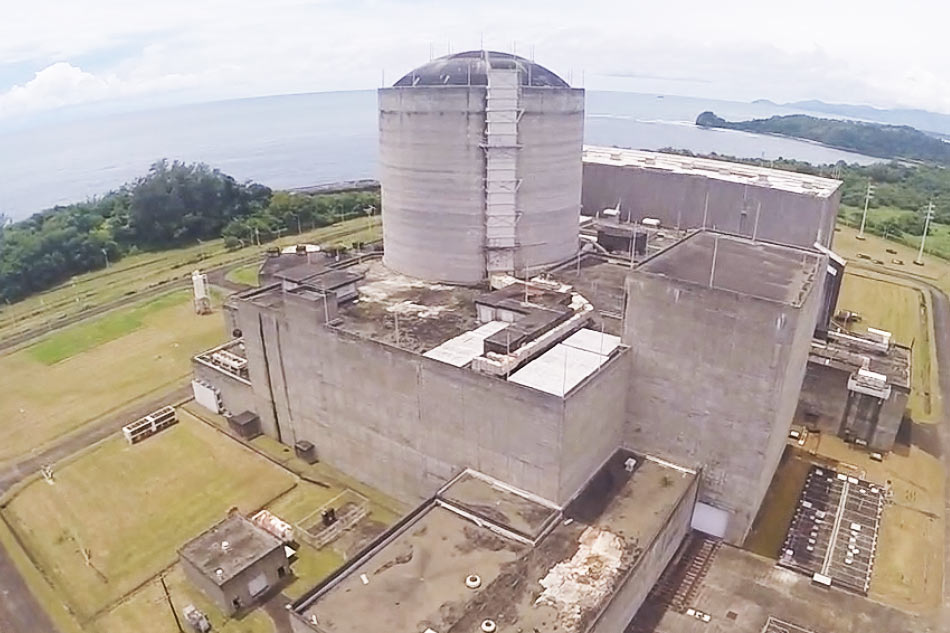Menu

The Philippines is the first ASEAN Member State (AMS) to build a nuclear power plant. In response to the oil crisis in 1973, the Philippines decided to build the Bataan Nuclear Power Plant (BNPP). The Bataan Nuclear Power Plant (BNPP) sits on a 389-hectare protected land at Napot Point, a peninsula in the west coast of Morong, Bataan, at the Luzon island. Had the plant been operational, its 623 MW electrical capacity could have provided at least 10% of the present power requirements for the Luzon grid. It took almost 8 years to construct, but then it has been on preservation mode since 1986 at a cost of PHP 40 to PHP 50 million (or US$1 million) a year for the maintenance.
Below is the Plant’s milestone, to show the historical background of the BNPP:
July 1973: the Philippines’ economy was under a lot of pressure due to the oil crisis. With the intention of finding an alternative energy source, President Marcos decided in July 1973 to construct a nuclear power plant (NPP).
February 1976: the beginning of the construction process. A Contract was signed between the National Power Corporation of the Philippines and Westinghouse Electric Company, USA.
June 1979: Construction suspended in wake of Three Mile Island (TMI) accident in March 1979.
January 1981: Construction resumed after the project undertook a comprehensive study and assessment on the safety aspect of the Plant’s design.
May 1984: Construction completed. The BNPP was supposed to generate 623 MW of electricity. Hot functional tests were completed and the Plant was ready for initial synchronization to the grid.
July 1984: Construction appraisal review by the International Atomic Energy Agency (IAEA) mission on Operational Safety Review Team (OSART) I. The OSART is a procedure that begins with a request from implementing country. The IAEA coordinates an international team of experts to review the operational safety performance of the requesting country’s NPP.
February 1985: IAEA OSART II operational readiness review. Although it identified issues and made recommendations, the IAEA said the Plant’s construction met international standards. After the second inspection, the IAEA said that the plant was ready to receive fuel and begin start-up testing for its commercial operation.
April 1986: the Marcos regime ended and Aquino became president. The Chernobyl accident happened in the same year, which caused Aquino’s administration to mothball the Plant. Since then, the Plant was placed under preservation (until now).
2007: the Philippines Department of Energy (DOE) set up a project to study the development of nuclear energy, in the context of an overall energy plan for the country. Nuclear energy would be considered in order to reduce the country’s dependency on imported oil and coal. The Government of the Philippines (GoP) is considering to rehabilitate BNPP by virtue of Senate Bill No. 580, filed at the Sixteenth (16th) Congress.
February 2008: IAEA mission to Bataan. In 2008 an IAEA mission commissioned by the GoP advised that Bataan-1 could be refurbished and operated economically and safely for 30 years. The IAEA also recommended a policy framework for nuclear power development in the country.
December 2008: a joint cooperation between the National Power Corporation (NPC) of the Philippines and Korea Electric Power Corporation (KEPCO) was established to conduct a feasibility study on reactivating BNPP. Its preliminary recommendation was that BNPP should be refurbished.
August 2016: the Secretary of Energy said that the 2007 taskforce would be reinstated to reconsider commissioning BNPP in the future.
The GoP has yet to establish its position on whether or not to pursue nuclear for power generation in the long-term. In this context, the government is looking and considering various options before a critical decision is made.
Considering the very expensive fully paid and idle asset at hand, and the country’s need to educate more people on the benefits of the peaceful use of atomic energy, the GoP opened BNPP to the public in 2008, as part of the Government’s information, education and communication programme on nuclear power. Plant briefings and tours became daily activities at the Plant. The BNPP provides visitors with a basic knowledge on nuclear energy, information on the importance and competitiveness of nuclear energy, also the history of the Plant. The briefings are followed with a tour to show the Plant’s major components like the steam generator building, reactor building, and control room.
Thereafter, the BNPP has been a yearly field trip and study tour destination for schools, universities, and other institutions. The BNPP is listed as one of Bataan’s tourist attractions by the Department of Tourism of Central Luzon, and has been opened to public, particularly students, in order to raise awareness on nuclear energy. (Featured photo: Bataan Nuclear Power Plant. Credit: ABS-CBN the Philippines)
References
https://cnpp.iaea.org/countryprofiles/Philippines/Philippines.htm
http://www.world-nuclear.org/information-library/country-profiles/others/emerging-nuclear-energy-countries.aspx
http://www.napocor.gov.ph/index.php/bataan-nuclear-power-plant
